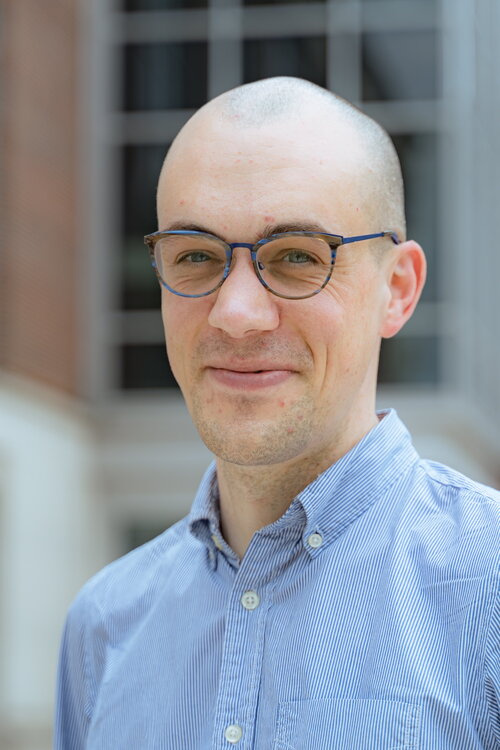
Contact Information
Urbana IL 61801
Research Areas
Research Description
Sustainable ecosystems using synthetic biology tools to simplify, miniaturize and automate engineering of photosynthetic organisms
Our research aims to provide a sustainable ecosystem for future generations, by working openly and collaboratively with synthetic biology tools to simplify, miniaturize and automate engineering of photosynthetic organisms.
Currently, we are focused on developing a mechanistic understanding of (1) adaption of photosynthesis to environmental stress and fluctuations (2) how protein structure influences the activity of genes involved in photosynthesis.
This will allow us to take engineering approaches to introduce improvements in crop performance, as photosynthesis is one of the few remaining traits that breeders have not optimized. To do this we take an interdisciplinary approach, collaborating with researchers on campus to leverage advances in synthetic biology, machine learning, protein engineering, gene editing, genomics and automation to assess the performance of enzyme variants and gene function on photosynthetic performance before translating these findings into crops for field experiments on campus.
The major focus of our lab at the moment is to (1) Develop the smallest know photosynthetic eukaryote, Ostreoccocus tauri, as a model to studying phototrophs, and as a chassis for testing computational predictions of metabolic models and alternate carbon fixation pathways. (2) Developing platforms for directed evolution of photosynthesis enzymes.
Education
B.Sc. (Hons), 2007, University of Edinburgh, UK
Ph.D., 2011, Imperial College London, UK
Post-doc, 2011-2017, University of Cambridge, UK
Research Fellow, 2018-2021, Institute for Genomic Biology
Additional Campus Affiliations
Assistant Professor, Plant Biology
Affiliate, Carl R. Woese Institute for Genomic Biology
Assistant Professor, Center for Digital Agriculture, National Center for Supercomputing Applications (NCSA)
External Links
Recent Publications
Bhatnagar, N., Chung, S. S., Hodge, J., Kim, S. Y., Sands, M., Leakey, A. D. B., Ort, D. R., & Burgess, S. J. (2025). Phylogenetic diversity of light-dependent phosphorylation of Thr78 in Rubisco activase. Journal of experimental botany, 76(18), 5455-5464. Article eraf266. https://doi.org/10.1093/jxb/eraf266
Dong, J., Croslow, S. W., Lane, S. T., Castro, D. C., Blanford, J., Zhou, S., Park, K., Burgess, S., Root, M., Cahoon, E., Shanklin, J., Sweedler, J. V., Zhao, H., & Hudson, M. E. (2025). Enhancing lipid production in plant cells through automated high-throughput genome engineering and phenotyping. The Plant cell, 37(2), Article koaf026. https://doi.org/10.1093/plcell/koaf026
Feyissa, B. A., de Becker, E. M., Salesse-Smith, C. E., Shu, M., Zhang, J., Yates, T. B., Xie, M., De, K., Gotarkar, D., Chen, M. S. S., Jawdy, S. S., Carper, D. L., Barry, K., Schmutz, J., Weston, D. J., Abraham, P. E., Tsai, C. J., Morrell-Falvey, J. L., Taylor, G., ... Muchero, W. (2025). An orphan gene BOOSTER enhances photosynthetic efficiency and plant productivity. Developmental cell, 60(5), 723-734.e7. https://doi.org/10.1016/j.devcel.2024.11.002
Gotarkar, D., Digrado, A., Wang, Y., Doran, L., Sparrow-Muñoz, I., Chung, S., Lisa, N., Wasiq, F., Amaro, G., Blakely, B., Diers, B. W., Eck, D. J., & Burgess, S. J. (2025). Variation in relaxation of non-photochemical quenching between the founder genotypes of the soybean (Glycine max) nested association mapping population. Plant Journal, 121(2), Article e17219. https://doi.org/10.1111/tpj.17219
Khaipho-Burch, M., Burgess, S. J., Wright, R. C., Temme, K., Voiniciuc, C., & Hanson, A. D. (2025). Editorial: How SynBio can *realistically* impact crop improvement and agriculture. Plant physiology, 198(3), Article kiaf179. https://doi.org/10.1093/plphys/kiaf179